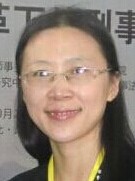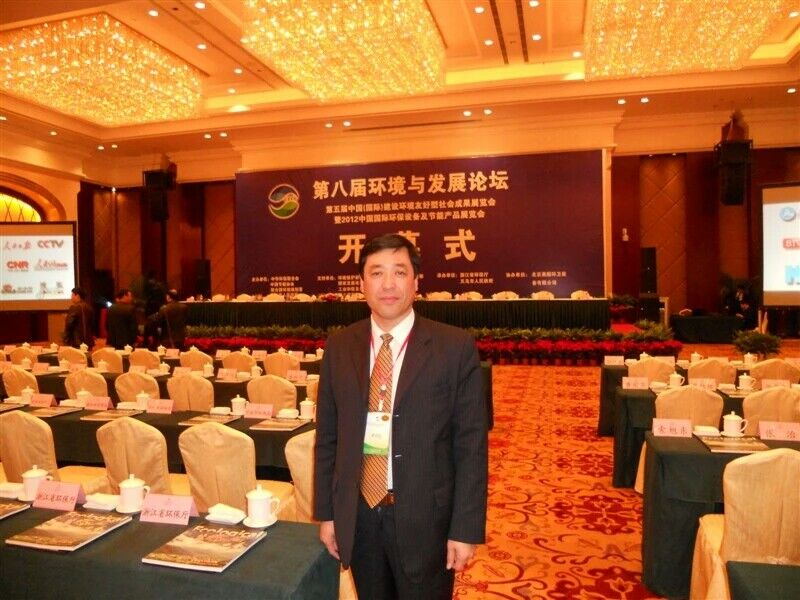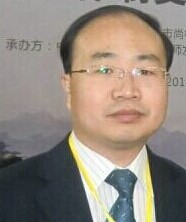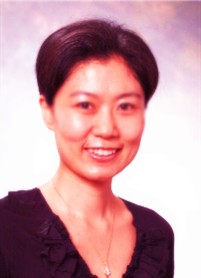20 Steps for Pricing a Patent
To value an invention you have to understand it.
BY J. TIMOTHY CROMLEY
NOVEMBER 2004
nventors help solve vexing problems, both sophisticated and simple, and as a result sometimes enjoy considerable celebrity and rewards. Our societyЎҜs economic success, too, is based on innovation. To encourage public disclosure of inventions, the U.S. Patent and Trademark Office (USPTO) issues an inventor a patent, which excludes others from making, using, selling or importing that invention into U.S. territories for a limited period of time. The three kinds of U.S. patents cover living plants, ornamental designs and useful inventions (the latter are called Ў°utilityЎұ patents). Familiar products once protected by U.S. utility patents include Alexander Graham BellЎҜs Ў°improvement in telegraphyЎұ (the telephone), the Wright brothersЎҜ Ў°flying machineЎұ and Thomas EdisonЎҜs Ў°incandescent lampЎұ (the light bulb). This article provides valuators such as CPA/ABVs with a set of basic procedures for valuing U.S. utility patents.
Patents are intellectual property (IP) that may need to be appraised for accounting, tax, litigation and transactional purposes in situations that include divorce or bankruptcy actions, estate settlements, sales of businesses and company mergers (which might require valuing portfolios of inventions). The ability to appraise patents can be important for GAAP financial reporting purposes under FASB nos. 141 and 142, especially for auditors and valuators in high-tech industries in which there are lots of business combinations. An understanding of how to appraise patents also may be useful in expert witness engagements (see Ў° Damages ArenЎҜt Always Patently Obvious Ўұ).
Edison and Beyond
U.S. patents are being issued at a rate of more than one million a decade.
Source: www.uspto.gov .
RESEARCH AND COMPARE
Some patents are very valuable, while many are not. Because patents often are quite complex, appraising one usually is a highly detailed and expensive process that requires the input of lawyers and advisers with specific technical knowledge and experience. The makeup of valuation teams will vary by engagement, but it is axiomatic that before an appraiser can value something, he or she has to understand what it is. Here are 20 steps to help valuators such as CPA/ABVs do that:
1. Check whether the patent is in force. Before the CPA/ABV starts a detailed evaluation, he or she should see whether one is warranted. The first question to ask is whether the patentЎҜs maintenance fees are up to date. If not, the patent may be worthless. Maintenance fees are due at the U.S. Patent and Trademark Office at 3 12 , 7 12 and 11 12 years from issuance. Some payment delays can be rectified, but if the maintenance fees havenЎҜt been paid by the Ў°cureЎұ date, the patent might be worth nothing due to Ў°abandonment.Ўұ
2. Identify the context. The premise of any valuation engagement can affect its conclusion. For example, a patent royalty amount that seems reasonable in an armЎҜs-length negotiation may not be indicative of what later might be assessed for infringement of the invention if a plaintiff successfully sues for damages.
3. Gather information. For particularly valuable patents, CPA/ABVs should request the following:
A copy of the application file on the patent, including all USPTO correspondence.
A list of any foreign patent applications relating to the invention (and related sales).
Copies of any relevant business plan, marketing study, financial statements and independent appraisal.
Descriptions of any litigation, past or present.
Copies of any contract, licensing agreement or offer to license pertaining to the patent.
Available economic data on the industry in which the invention is used.
Copies of promotions and advertising materials used during the past year relating to the invention or the product in which it is incorporated.
Cost information relating to the existing or proposed patented product including cost accounting records and/or engineering feasibility studies.
4. Assemble a valuation team. Expertise in patent law, an understanding of monopolies, business valuation skills and a background in the technology of the patent are often essential for accurate patent valuations. Valuation teams ideally should include a patent attorney and someone with proven skills in patent economics such as a CPA/ABV who has testified on patent damages and is knowledgeable about the issueЎҜs seminal case law.
5. Read the patent. The CPA/ABV should either carefully read the patent or carefully interview an independent patent attorney who has. Among other things, the patent includes the title of the invention, a serial number, the name(s) of the inventor(s) and, if applicable, the assignee to whom the inventor(s) transferred ownership. The Ў°claimsЎұ section of the patent presents the most important information: the scope of the invention. The background section often conveys the most useful information about the patentЎҜs economic potential but is not legally binding. The Ў°detailed descriptionЎұ section can be technical and lengthy; it expresses the physical aspects of the invention (a legal requirement) to those working in the relevant discipline. Unless used to define the claims, the description typically does not limit the scope of the invention and thus does not affect its value. The date of the patent lets the CPA/ABV calculate the patentЎҜs remaining life. The Ў°references citedЎұ and Ў°other referencesЎұ sections provide a list of pertinent U.S. and foreign patent documents and may give insight into the patentЎҜs technological niche.
6. Investigate the patentЎҜs scope. A patentЎҜs scope of protection often is the most important basis of value. A patentЎҜs claims are analogous to real estate property lines. The CPA/ABV should pay careful attention to the claims section to understand a patentЎҜs scope and how its claims relate to the marketplace and should discuss it with the patent attorney on the team. To better understand it, the CPA/ABV should analyze the Ў°cited,Ўұ Ў°relatedЎұ and Ў°citingЎұ patentsЎӘincluding derivative inventionsЎӘand the extent to which patent holders had limited the scope of their patent because of arguments made to the USPTO in obtaining the patent.
7. Talk with a patent attorney. The CPA/ABV can go to the patent and patent attorney databases at www.uspto.gov to find the originating attorney(s) for the patent. A valuator will need the patent holderЎҜs consent to discuss details not in the public domain. Legal factors that affect the patentЎҜs value are whether there has been litigation and, if so, what the outcome was; whether foreign patent protection exists; and how likely it is that the patent might be declared invalid, infringed or infringing.
8. Inquire about the patentЎҜs validity. The possibility a patent may be held invalid if challenged in court diminishes its value. If it is discovered after a patent has been issued that the inventors didnЎҜt meet the statutory requirements for obtaining itЎӘfor example, if they werenЎҜt the inventors (35 USC section 102(f)), or had published information about the invention or offered it for sale more than one year before the date of application (35 USC section 102(b))ЎӘthe patent is invalid and substantially worthless.
9. Inquire into blocking patents. Owning a patent does not guarantee the right to Ў°practice the inventionЎұ if doing so infringes someone elseЎҜs underlying patent. If the new invention infringes a prior patent, the earlier one is said to Ў°blockЎұ it, diminishing its potential value. A patent attorney familiar with the patent should research how likely it is that implementation of the patent will infringe anotherЎҜs patent.
10. Consider synergies among patents. A portfolio of related patents can be worth more to a single owner than the same patents would be individually to multiple parties because it can eliminate blocking patents. With such portfolios it may be to the clientЎҜs advantage to value the patents as a family rather than individually.
11. Investigate foreign patent protection. Because patents are enforceable only within the jurisdictions issuing them, valuable inventions often are patented in several countries at once. A valid patent registered in multiple national jurisdictions will have a larger market and will be worth more. If the client didnЎҜt consider the invention valuable enough to register in multiple national jurisdictions, the CPA/ABV should find out why.
12. Consider the remaining life of the patent. For valuation, CPA/ABVs must consider not only the legal life of the patent but also its economic, technological and regulatory context. In the United States, the legal life of a utility patent applied for after June 7, 1995, ends 20 years after its earliest effective filing date (35 USC section 154). Under transitional provisions, the term of any patent in force or pending on June 7, 1995, is the longer of 17 years from the date of issue or 20 years from the filing date. Previously, patents were granted for a term of 17 years from the date of issue.
A patentЎҜs term can be extended up to five years if issuance was delayed by premarket regulatory review or to compensate for certain USPTO procedural delays in processing the application. A patentЎҜs economic life can be considerably shortened by developments that make the invention obsolete.
13. Analyze any prior royalties paid for the patent. To develop a value for a patent as of a certain date, the CPA/ABV should note any prior royalties paid for the patent and look for differences in context from the previous to current time and analyze and explain them. The often cited patent infringement case Georgia-Pacific Corp. v. United States Plywood Corp. (318 FSupp 1116 (SD NY 1970)) lists 15 factors useful in analyzing royalties, among which are factor 5, the commercial relationship between the licensor and licensee, and factor 13, the realizable profit that should be credited to the invention (see Ў° Guidelines from Georgia-Pacific Ўұ). Other factors may affect royalties, too. They include the remaining costs and risks of prototype development, whether the licensee or the licensor is to bear them and whether the licensee or the licensor is likely to benefit from or to be burdened by related patent litigation.
14. Inquire into any actual or threatened litigation involving the patent. The fact that a patent has been successfully litigated is evidence its owners believe it to be valuable and signals competitors to stay out of the market. This in turn helps to increase its value. The opposite also is trueЎӘa failed attempt to enforce a patent can adversely affect its value.
15. Identify the next-best alternative technologies. Identifying such technologies can help CPA/ABVs forecast the cost savings and/or price premium that can accrue to a clientЎҜs patent. For example, if research shows the next-best alternative technology depresses profit margins by 1% (other factors being equal), a royalty rate up to that percentage might be reasonable. Analyzing competing technologies helps demonstrate the inventionЎҜs potential to take market share and revenues away from the competition.
16. Estimate a demand curve for the patented item. Demand for a patented product, which often is a key concept in lost-profits damages analysis, is no less so in a patent valuation. The CPA/ABV should estimate the demand curve by reviewing the industry in which the patent and alternative technologies compete. He or she should talk to knowledgeable marketing professionals, search the Internet and conduct a market survey. The key question is Ў°What is the expected level of revenues at various price points?Ўұ
17. Determine the patented productЎҜs point of profit maximization. CPA/ABVs can determine the unit price for profit maximization as follows: First, calculate a marginal revenue (MR) curve directly from the demand curve (D) determined by your research. (D curves almost always slope downward because as unit price declines, buyers are more apt to purchase or Ў°demandЎұ more units. MR curves, which depict the change in total revenue generated by the sale of one additional unit at various unit prices, similarly decline, but at twice the rate of their related D curves.)
Second, develop preliminary cost estimates at various levels of production, and from them derive a marginal cost (MC) curve. MC information sometimes can be gathered from cost accounting information and/or from engineering feasibility studies.
Third, if both MR and MC curves can be determined for a patent, itЎҜs possible to show the price at which certain quantities are likely to be sold. For example, the profit-maximizing price with a patent is shown by the point on the D curve directly above the intersection point of the MR and MC curves. Thus, with a patent, ABC Corp. might be able to sell 2,500 widgets at $35 each (see exhibit ). Without a patent, however, competitive pressures will push the price down to $10 a widget (where the D and MC curves intersect)ЎӘbut at that low price total demand will expand to 5,000 widgets.
Such analysis can help establish an optimum target price that will maximize profits from a newly patented product and verify the reasonableness of cash-flow forecasts in an income-approach valuation of the patent. The analysis also may reveal some of the economic intricacies that can arise in a patent infringement caseЎӘfor example, incremental lost income, lost profits due to lost revenues, and price erosion.
Profit Maximization Analysis
18. Consider the applicability of traditional valuation approaches. Traditionally, valuations are approached on cost, market and income bases. Ideally, all three approaches should be considered. However, many valuators prefer the income approach for valuing unique, income-generating properties such as patents.
A cost approach is seldom useful for patents, and the market approach may not be relevant because patents are unique by definition and comparable patents may be difficult to identify. CPA/ABVs who do use a market approach must analyze comparable patents in detail, including their legal, economic and technical differences and the respective terms of their licensing or sale.
19. Do an income-approach valuation. Variations of an income approach to valuing patents can be broadly classified as royalty-based or profit-contribution methods. Ў°Profit contributionЎұ refers to the profit attributable to a patent. Ў°RoyaltyЎұ refers to the income stream expected by the patent holder under a licensing transaction. Whether a profit contribution or royalty method is more appropriate in a given situation depends upon the premise of value or expected future operationsЎӘfor example, whether a patent is to be sold separately or used as part of a going concern.
Other important factors relating to an income-approach appraisal of patents are
Sales projections. These can be based on a profit maximization analysis (see exhibit) or on a historical track record if it is available and predictive of future results. Penetration rates for a young patent might be due to initial product impact rather than patent rights. If that is the case, historical penetration rates might not be applicable to a discounted cash flow forecast.
Discount rate. The discount rate should properly reflect the risks of an investment in the forecasted profit stream.
To calculate the potential incremental income or profit contribution to be derived from a patent, it helps if CPA/ABVs consider the price advantage or premium associated with the sale of the patented product and/or cost savings associated with the patentЎҜs use. Cost-savings investigations seek answers to the question: How much money would a prospective licensor save by using the patented product? Price premium investigations involve finding the price point for profit maximization (see exhibit ). Typically, a negotiated royalty rate will be lower than the projected total economic profit contribution from a patent to provide economic incentives for both licensor and licensee.
CPA/ABVs also can base their valuation on a discounted cash-flow analysis for each of two key alternatives: with a patent or without one. The discounted cash-flow analysis would factor in likely expenses, capital expenditures and working capital needs, and would utilize a discount rate consistent with the aggressiveness of the forecasted cash flows, the costs of capital and the risks of the investment. Appraisers then could value the patent as the difference between the two alternatives.
20. Write the patent valuation report. Reports should document the patents valued, assumptions made and limitations of the analysis; the procedures followed and the conclusions reached; and the qualifications of the valuation team members and their respective contributions to the appraisal. If an essential team member is missingЎӘfor example, if a patent attorney did not participate in the evaluation processЎӘthe report should disclose the possible impact of that absence as a limitation of the valuation analysis.
(В•ГчЈәұҫХҫЛщК№УГҲDЖ¬ј°ОДХВИзҹoЧўГчұҫХҫФӯ„“(chuЁӨng)ҫщһйҫW(wЁЈng)ЙПЮD(zhuЁЈn)Эd¶шҒн����Ј¬ұҫХҫҝҜЭdғИ(nЁЁi)ИЭТФ№ІПнәНСРҫҝһйДҝөД�Ј¬ИзҢҰҝҜЭdғИ(nЁЁi)ИЭУР®җЧhЈ¬ХҲВ“(liЁўn)ПөұҫХҫХҫйL����ЎЈұҫХҫОДХВҳЛ(biЁЎo)УРФӯ„“(chuЁӨng)ОДХВЧЦҳУ»тХЯКрГыұҫХҫВЙҺҹРХГыХЯ����Ј¬ЮD(zhuЁЈn)Эd•rХҲ„Х(wЁҙ)ұШЧўГчіцМҺәНЧчХЯ�Ј¬·с„tҢўЧ·ҫҝЖд·ЁВЙШҹ(zЁҰ)ИО�����ЎЈ) |










